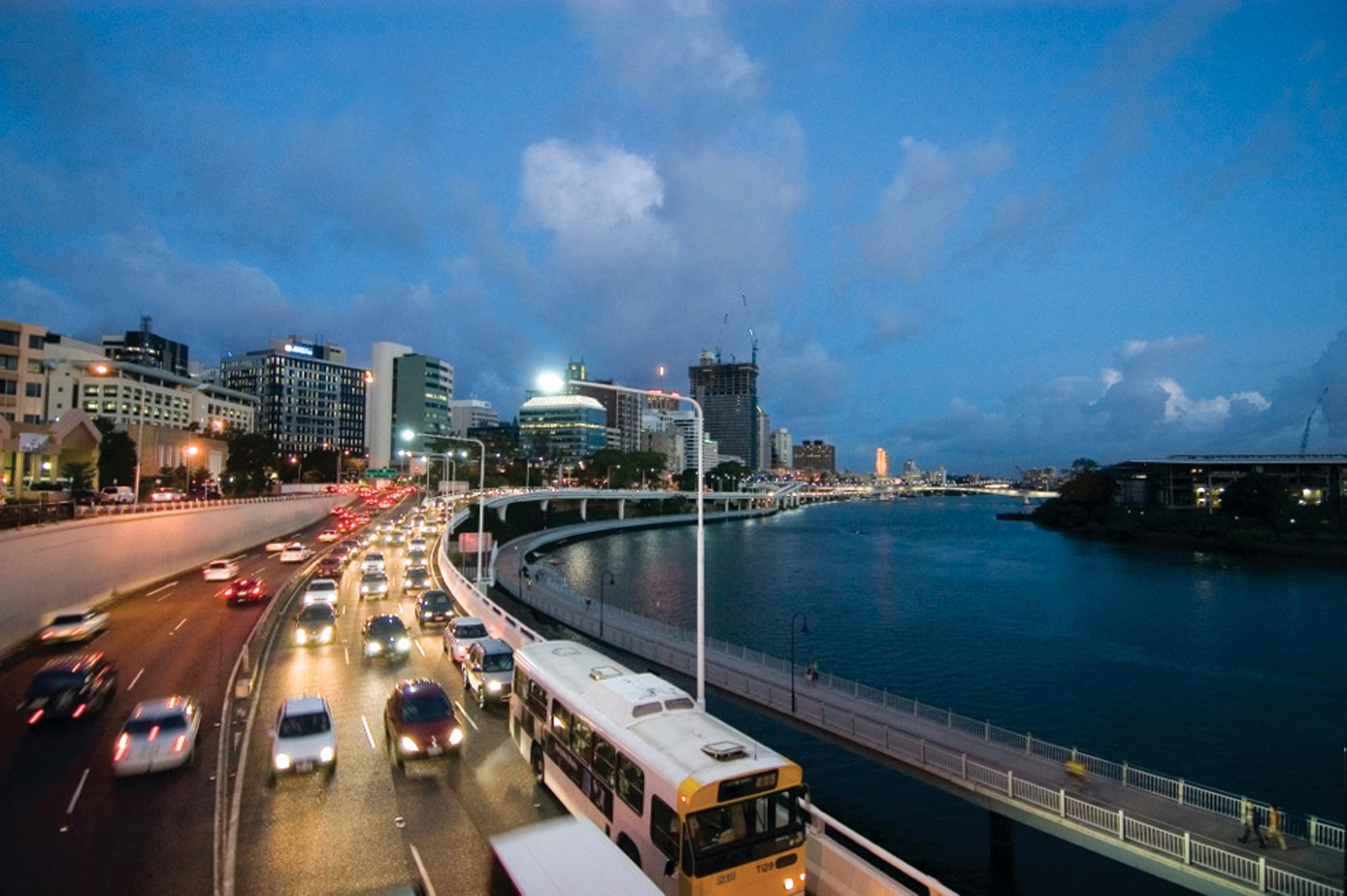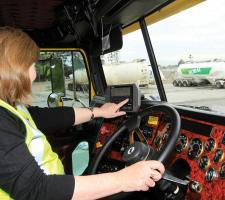
Intelligent Access Programme is used to control the routes taken by the heaviest vehicles, protecting vulnerable infrastructure
Regulating heavy truck weight isn’t all about sensors in the road… this year marks a significant point in the progression of Australia’s Intelligent Access Programme as its administrators attempt to answer the scheme’s critics. Jon Masters reports.
Australia’s Intelligent Access Programme (IAP), the country’s telematics-based system of regulating movement of the heaviest vehicles, is now five years old. The IAP is administered byThe IAP is evolving in a number of ways. Notably, TCA is in the midst of introducing an ‘Entry Options’ initiative to the overall scheme, giving freight operators opportunity to sign up to the IAP and its monitoring protocols with their own in-vehicle units. “We are also working with IAP service providers to develop flexible pricing options,” says Hill. “This is for operators that only occasionally load to the higher mass limits (HML) covered by the IAP.”
These efforts have come in response to key concerns of industry and freight operators in Australia. The scheme was launched in 2008 as an answer to the threat that increasing vehicle weights posed for Australia’s infrastructure. According to Hill, it was the country’s bridge engineers, in particular, that said “enough is enough” when an increase in the vehicle mass limit from 42.5 to 45 tonnes was proposed in the 1990s. Then, when the Australian Government announced a further HML category of 45-50 tonnes, it did so with the proviso that anyone wanting to haul such loads would have to be signed up to a national programme controlling the routes they use.
Legislative footing
The TCA was established in 2005 for the purpose of setting up such a system and acting in a support role for the regulators of Australia’s states and territories. The regulators would select the roads and structures that HML vehicles could and could not use (and as regulators, set and apply penalties as necessary). TCA, founded on a legislative footing as administrator and auditor, would establish all the necessary conditions for regulating private sector service suppliers, setting a national supplier framework contract and a standard for the technology to be used.Fast forward to the present, and five IAP service companies have been certified by TCA to fit their accredited GNSS technology to operators’ vehicles and to provide back-office services and compliance reporting for state regulators.
Over 500 freight operators have signed up to the scheme, meanwhile, making a single up-front payment or paying a regular subscription to one of the five service providers, although only for freight transport in Australia’s Eastern Seaboard states so far.
“It is these states that face the greatest challenges of balancing freight against many other road users and the need to protect critical infrastructure,” Hill says.
So has it worked? “The key sign as a measure of success is the fact that the IAP has enabled access to be opened up to all infrastructure including allowance of traffic onto vulnerable structures.
This is possible because restrictions on the heaviest vehicles can be policed and enforced,” says Hill.
Dealing with legacy
The IAP has not been without its critics, however. Freight operators’ initial displeasure at being told access to HML routes would come at a cost has turned into a long-running dispute with industry over legacy systems. It is likely that many operators’ existing GPS equipment, fitted for fleet management purposes, would adequately serve to provide the same functions as that of the five service providers required under IAP rules. But this cannot provide the assurance of a regulated system. “Many ask why we cannot trust them to provide their own route reporting to regulators,” Hill says. “In some cases we could, but in others, as soon as we ask to see their data for auditing, all of a sudden the data disappears, there is a tendency to hide or manipulate the information, or the lawyers appear.”
While a fully regulated system is necessary, TCA has introduced the Entry Options scheme to answer what Hill acknowledges as a “chorus of complaints” from Australia’s transport sector over the issue of Government recognition for legacy systems.
“We are saying, okay let’s look at what you’ve got,” he says. “So far we have worked with the Minister for transport and ports in New South Wales – so an upper echelon of government – looking at the equipment of three operators wanting to transport HML across the state. The message is that if you have your own equipment and it works for you, let’s get it assessed. Providing it meets requirements, there is no need to upgrade.”
Pricing issues
Operators are still required to pay a premium for registration to the IAP service, however. Hill also acknowledges this as a significant issue for freight operators and industry. The price of a monthly subscription is typically AUS$100-150 per vehicle, which compares to about AUS$80 per month for an uncertified system.“The returns far outweigh the costs,” Hill says. “For a mobile crane operator, for instance, it’s often a case of regulate or don’t operate, but generally speaking there is a fundamental premise of the IAP, of improved access and productivity and therefore profitability for freight operators. Furthermore, state governments know where vehicles are going and there is a response from service providers if vehicles are travelling with faulty equipment.”
Part of the premium goes toward TCA’s costs, effectively to pay for the assurance of a level playing field provided by regulation. However, notwithstanding TCA’s response to general questions of cost, the organisation has recognised difficulties encountered by occasional operators of HML loads.
Hill says: “Cost is a big issue, but when industry is talking about pricing they are really meaning cost per vehicle utilisation. “The IAP was set up for regular hauliers of HML and special vehicles. What we missed out on was the low utilisation operators for whom the gains do not outstrip the cost. It is not for us to set prices, but we are working with the service providers on this and are hopeful of seeing introduction of more flexible pricing options. If we can get a trip-based charging system, or occasional HML vehicles on about $10 a month, then the cost/benefit will change for a lot of operators, breaking perceived issues of cost.”
The hope is that pricing in a way more suitable for less frequent HML hauliers will reinvigorate interest in the IAP. According to Hill, the scheme has been growing steadily as state governments increasingly turn to it for managing routes taken by high risk vehicles, but a more flexible approach to pricing is needed to get a greater number of operators on board.
The IAP system is now being exported, at least as a source of information, to assist Sweden’s exploration of the feasibility of a similar High Capacity Transports project. With its own mounting pressures of transportation and associated infrastructure and environmental constraints, Sweden is shaping up to be the first European country to follow Australia’s lead with a regulated telematics-based system of heavy goods vehicle control.
“Controlling access is about managing risk,” Hill concludes. “Through systems such as IAP, engineers can limit heavy load access onto bridges, or apply speed restrictions, with greater visibility of data. A standard permit system is a crude way of controlling access. The IAP is a much better way of doing this.”













